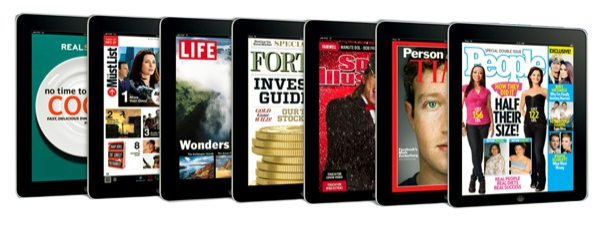[responsive] [/responsive]
[/responsive]
In the four years since the iPad burst onto the scene, promising an entirely new type of magazine experience, digital magazines have forgotten to evolve.
“For the most part, they are magazines that look and navigate like print editions with some ‘enhanced’ elements – an interactive graphic here, a video there,” notes Aileen Gallagher on PBS.org. “Phones get bigger and digital audiences keep growing, but magazine publishers can’t seem to create a digital product that people want to pay for.”
To uncover the reasons behind the digital magazine morass, Gallagher asked several industry experts where publishers were getting stuck. According to ScrollMotion’s Joe Zeff, digital readers are demanding more choice in their content.
“It makes no sense to me that Conde Nast and Hearst, with so many titles, have been unable to present consumers with the opportunity to mix and match from those titles,” Zeff said. “That type of curation is what we do every day with our Facebook and Twitter feeds. We pick and choose where we’re going to get our information and if there’s something we don’t like, we mute it.”
(To us this brings into question the very idea of “magazine.” What Zeff is talking about is NOT a magazine, but a user-generated scrapbook of content.)
Another view comes from Jeff Inman and Jill Van Wyke at Drake University, who say that the tablet is all about touch.
“Touchscreens create the expectation that you can interact not only on the individual buttons, but on the screen’s canvas itself. As brands transition from a print-focused model to a digital-centered model, they must give readers an experience that allows users to use the whole screen,” they wrote. And this hasn’t been happening.
Content curation and user wishes aside for a moment, if publishers are using digital channels to boost rate base, they are locked into replica versions by default.
“The replica edition has to include everything that’s in the print edition, from the table of contents to article titles to complete text,” Gallagher explains. “A nonreplica edition – one with ‘different editorial, advertising, photography, graphics and layout than the print edition’ – cannot count toward rate base, according to AAM rules.”
It’s the base rate that lures the advertisers, justifying higher ad revenues for the print (and theoretically digital) product.
“It’s an additional distribution source for publishers to sustain rate base in order to maintain and grow their revenue,” says MediaVest’s Robin Steinberg.
Gallagher notes the ultimate conundrum for publishers is to forget digital as part of the rate base and try something new.
“If publishers are unwilling to pursue business models that don’t revolve around rate base, innovation suffers. As a result, tablet editions are still replicas and make up only 3.8 percent of total paid circulation, according to AAM data. What excited readers in 2010 just bores them in 2014,” she writes.
And while Gallagher agrees that tablet magazines are pretty lousy, some journalism schools are working on digital magazine innovations that could offer new ways to do things, although some designers favor moving toward a fully responsive HTML5 solution.
Meanwhile, slumping digital magazine sales and stalled digital ad revenues bear out the fact that digital magazines just aren’t working as is. Magazines are a printed medium, as we’ve said so many times. Consumers want digital content in the bite sized chunks that they can control. And they want their magazines in print, fully curated the way a magazine should be. So let’s stop trying to shoehorn magazines into a platform that is clearly not a good fit.
